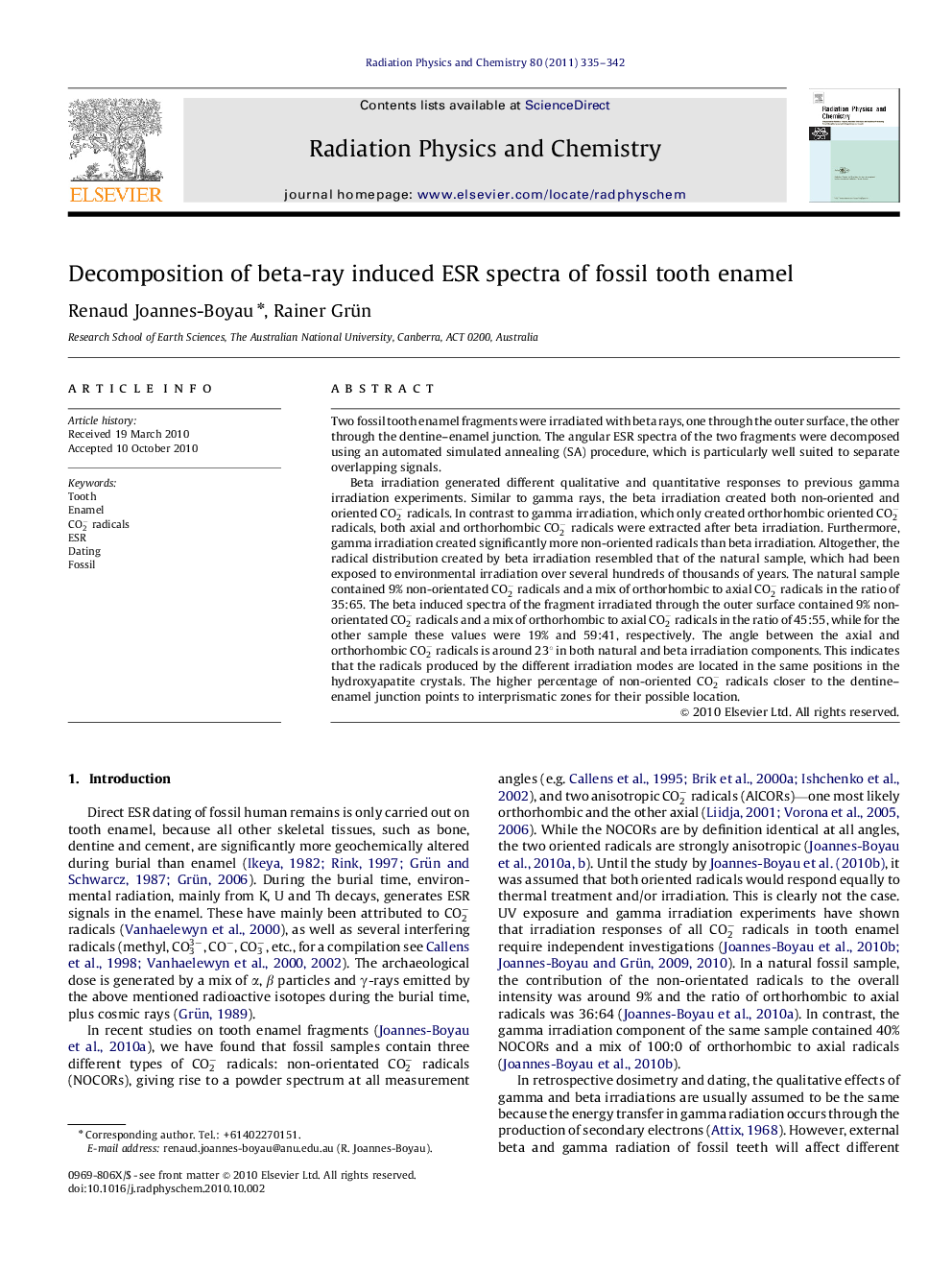| کد مقاله | کد نشریه | سال انتشار | مقاله انگلیسی | نسخه تمام متن |
|---|---|---|---|---|
| 1882777 | 1043261 | 2011 | 8 صفحه PDF | دانلود رایگان |

Two fossil tooth enamel fragments were irradiated with beta rays, one through the outer surface, the other through the dentine–enamel junction. The angular ESR spectra of the two fragments were decomposed using an automated simulated annealing (SA) procedure, which is particularly well suited to separate overlapping signals.Beta irradiation generated different qualitative and quantitative responses to previous gamma irradiation experiments. Similar to gamma rays, the beta irradiation created both non-oriented and oriented CO2− radicals. In contrast to gamma irradiation, which only created orthorhombic oriented CO2− radicals, both axial and orthorhombic CO2− radicals were extracted after beta irradiation. Furthermore, gamma irradiation created significantly more non-oriented radicals than beta irradiation. Altogether, the radical distribution created by beta irradiation resembled that of the natural sample, which had been exposed to environmental irradiation over several hundreds of thousands of years. The natural sample contained 9% non-orientated CO2− radicals and a mix of orthorhombic to axial CO2− radicals in the ratio of 35:65. The beta induced spectra of the fragment irradiated through the outer surface contained 9% non-orientated CO2− radicals and a mix of orthorhombic to axial CO2− radicals in the ratio of 45:55, while for the other sample these values were 19% and 59:41, respectively. The angle between the axial and orthorhombic CO2− radicals is around 23° in both natural and beta irradiation components. This indicates that the radicals produced by the different irradiation modes are located in the same positions in the hydroxyapatite crystals. The higher percentage of non-oriented CO2− radicals closer to the dentine–enamel junction points to interprismatic zones for their possible location.
Journal: Radiation Physics and Chemistry - Volume 80, Issue 3, March 2011, Pages 335–342